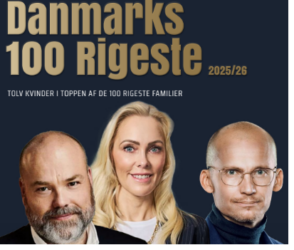Resume af teksten:
Spanien oplevede en økonomisk vækst på 0,6% i tredje kvartal, moderat i forhold til et robust andet kvartal på 0,8%. Væksten blev drevet af privatforbrug, investeringer og lageroptimering, på trods af svækket ekstern efterspørgsel. År-til-år GDP steg med 2,8%. Stærkt privatforbrug og EU-finansiering har opretholdt indenlandsk efterspørgsel, selvom eksporten faldt. Flere sektorer, herunder fremstilling og tjenesteydelser, er blevet ramt af opbremsningen, mens byggeriet oplevede en drastisk nedgang fra tidligere kvartaler. Der var også et fald i produktiviteten pr. arbejder og pr. arbejdstime. På trods af at Spanien fortsat driver beskæftigelsesvæksten i eurozonen, er der behov for strukturelle forbedringer i produktiviteten. Forventningerne peger mod en normalisering af væksten, med en prognosticeret stigning i BNP på 2,7% i 2025, og en yderligere normalisering til 2,2% i 2026, mens sektorindikatorer viser tegn på afkøling.
Fra ING:
Spain’s economy grew by 0.6% over the third quarter, following a robust second quarter, as external demand weakened. With signs of cooling in industrial activity and tourism, growth is expected to normalise over the coming quarters and into 2026

We expect Spain’s GDP growth to reach 2.7% in 2025, followed by a further normalisation to 2.2% in 2026
Spain’s economy slowed in line with expectations
Spain’s economy has moderated to a still solid 0.6% quarter-on-quarter growth in the third quarter, following a robust second quarter with 0.8% growth, which was driven by private consumption, investment, and inventory restocking. On a year-on-year basis, GDP expanded by 2.8%.
Domestic demand remained resilient, with strong private consumption and investment reflecting increased household spending power and the continued impact of EU funding. However, external demand growth turned negative as export growth weakened, a trend likely to be seen across Europe as tariffs start to bite over the third quarter.
The slowdown was broad-based across non-primary sectors. Manufacturing growth eased from 0.8% to 0.6% quarter-on-quarter, and services activity slowed from 1.0% to 0.8%.
Construction experienced a more pronounced deceleration, falling from 2.4% to 0.8%, although it still posted a strong 6.1% year-on-year growth. A key concern remains productivity, which declined again in the third quarter. Both per worker and per hour worked, productivity fell by 0.4% compared to the previous quarter. On a year-on-year basis, productivity per hour worked rose only 0.3%, while per-worker productivity declined by 0.5%.
While Spain continues to be a key driver of employment growth in the eurozone , translating this into more productive jobs to support GDP growth structurally will be crucial.
Economic growth is likely to normalise over the winter months
The latest figures suggest Spain is on a normalisation path from the height of a positive business cycle. Leading indicators such as manufacturing PMIs and DG ECFIN business surveys point to a cooling in industrial momentum. Tourism also shows signs of deceleration, albeit from elevated levels. In August, tourist spending grew by 6.7% YoY, which is roughly half the pace observed a year earlier, yet still resulted in record-high arrivals and expenditures. Retail sales, meanwhile, slowed to 4.2% YoY in September, down from 4.7%.
Further impact from US tariffs is likely to affect Spain to a lesser extent, given Spain’s lower exposure to the US compared to the EU. Spain exported goods to the US equivalent to 1.26% of GDP in 2023, whereas the overall EU exposure was 2.9% of GDP for exports. In light of these developments, we expect GDP growth to reach 2.7% in 2025, followed by a further normalisation to 2.2% in 2026.
Hurtige nyheder er stadig i beta-fasen, og fejl kan derfor forekomme.


